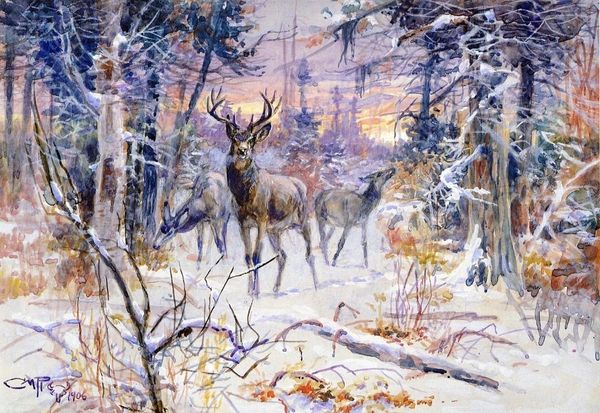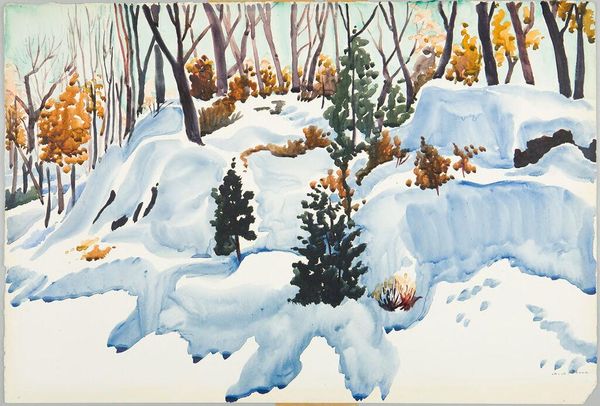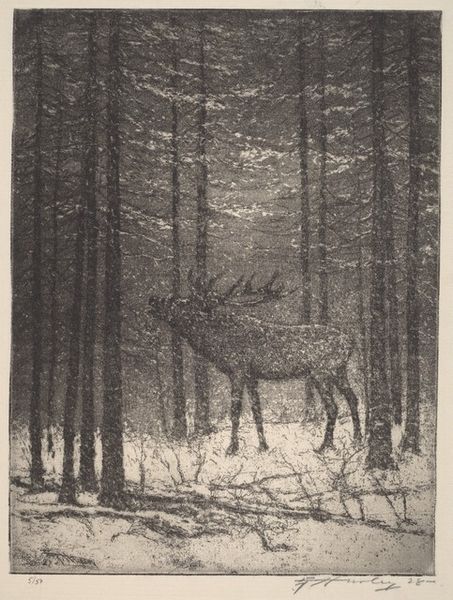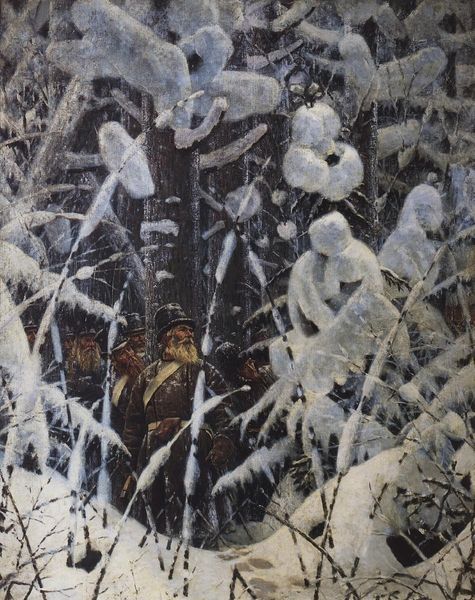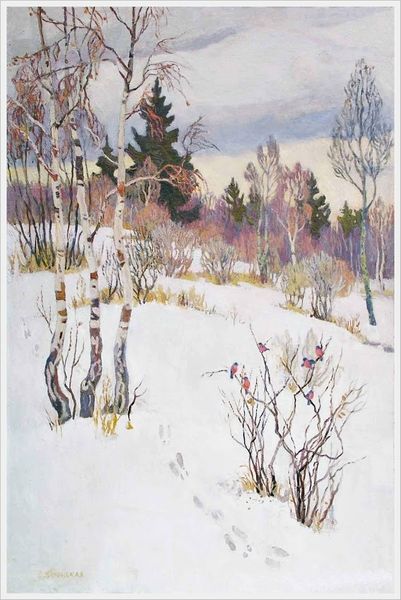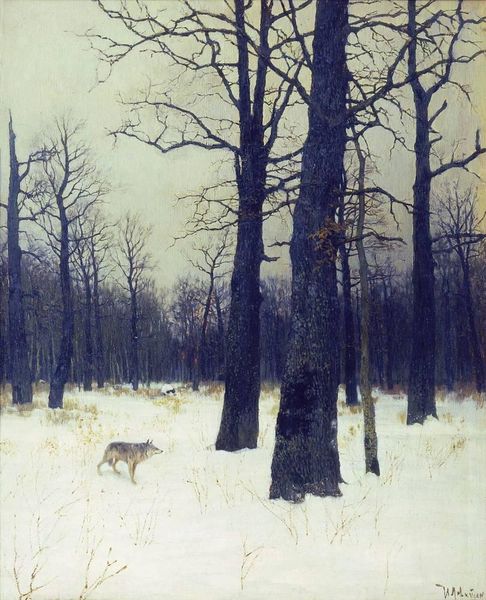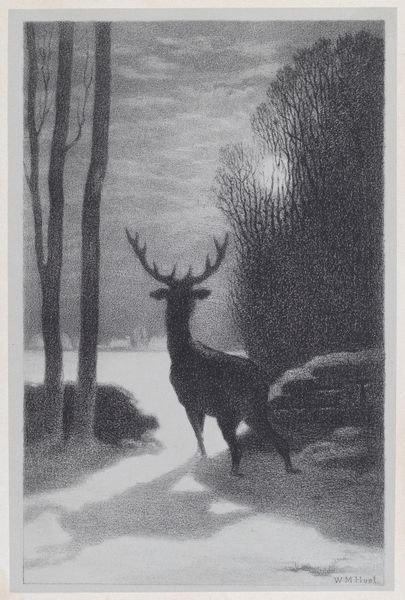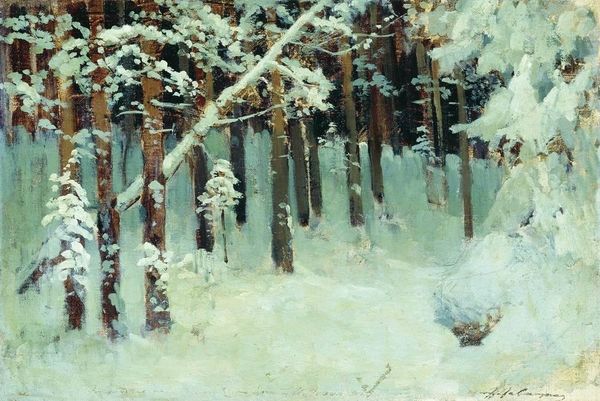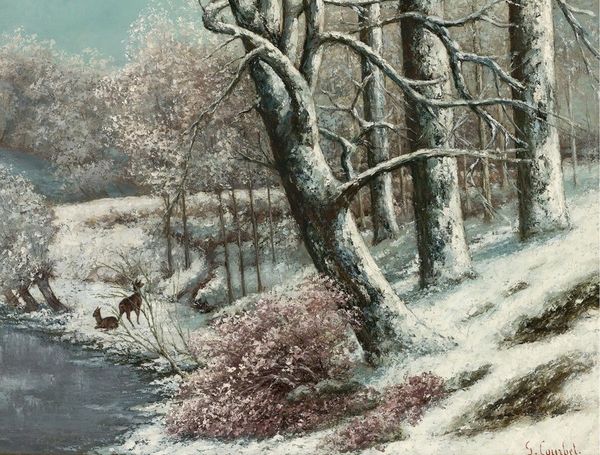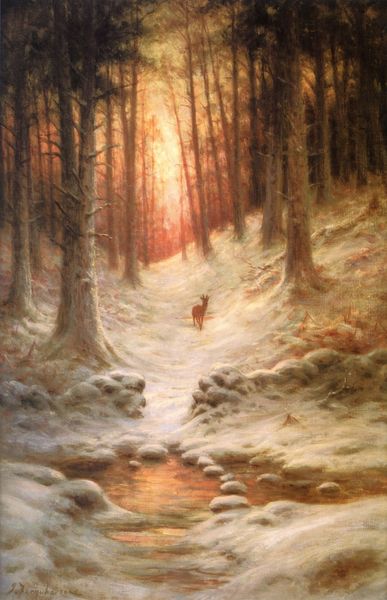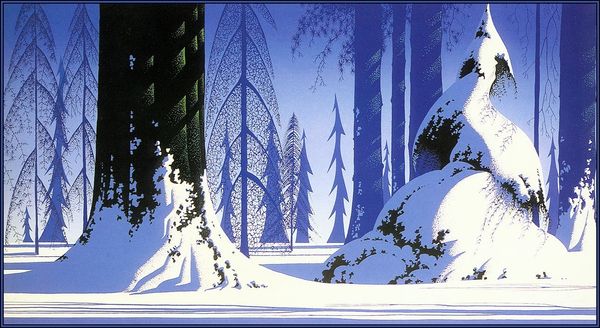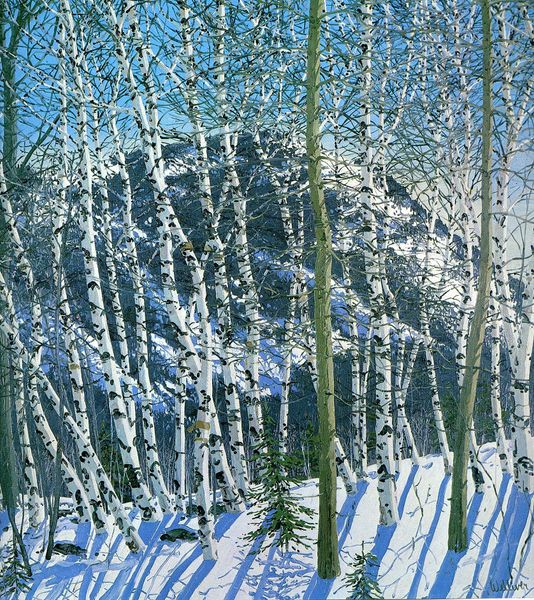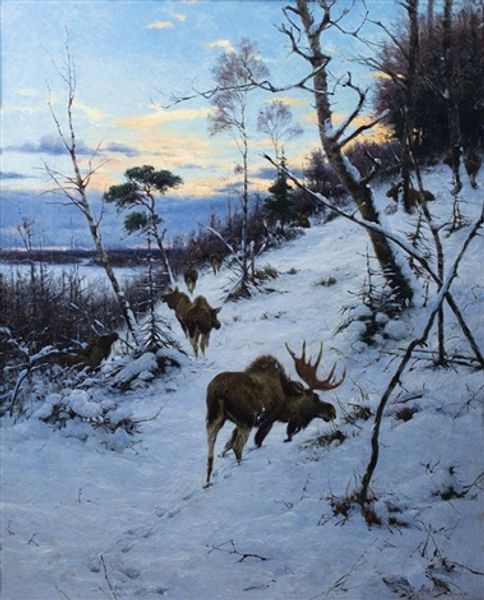
Dimensions: 55.5 x 36.5 cm
Copyright: Toshi Yoshida,Fair Use
Editor: Here we have Toshi Yoshida's "Aspen," created in 1973. It's a woodblock print, and what immediately strikes me is the stark contrast between the dark tree trunks and the bright, snowy landscape. What are your thoughts? Curator: From a materialist perspective, I'm drawn to the labor inherent in the woodblock process. Each line, each shade of color, represents a deliberate act of carving and printing. How does the artist's choice of this specific medium affect the final artwork, especially when considering the tradition of ukiyo-e? Editor: That’s a great point! Thinking about the physicality of carving each layer into wood really changes my perception. What is ukiyo-e? Curator: Ukiyo-e, or "pictures of the floating world," flourished during the Edo period in Japan. Originally, these prints catered to the burgeoning merchant class, depicting scenes of everyday life, popular entertainment, and beautiful courtesans. Knowing that, consider how Yoshida’s landscape continues or departs from that tradition, especially with the inclusion of the deer. Think about the labor that goes into forestry, hunting. Is this landscape "empty," or does it reference labor through absence? Editor: Interesting! I see the connection between the tradition and the landscape represented, though it makes me see the work from another perspective. It's less about aesthetic appreciation and more about the physical processes and even the socio-economic factors involved in creating and circulating art. What do you make of the limited color palette and seemingly simple composition? Curator: The simplicity is deceptive. Restricting the color palette might have been a pragmatic choice – fewer blocks to carve – but it also highlights the essential elements: the material of the wood itself, the texture of the paper, the distribution of ink. Think of it as a focus on the means of production itself becoming a key aesthetic feature. Editor: I’m now thinking more critically about the choices made in terms of production and how those choices influence how we view the final work. It makes the artwork a lot more engaging. Curator: Exactly. By considering the materials and methods used, we move beyond surface-level appreciation to understand art as a product of labor, skill, and specific historical and cultural conditions.
Comments
No comments
Be the first to comment and join the conversation on the ultimate creative platform.
